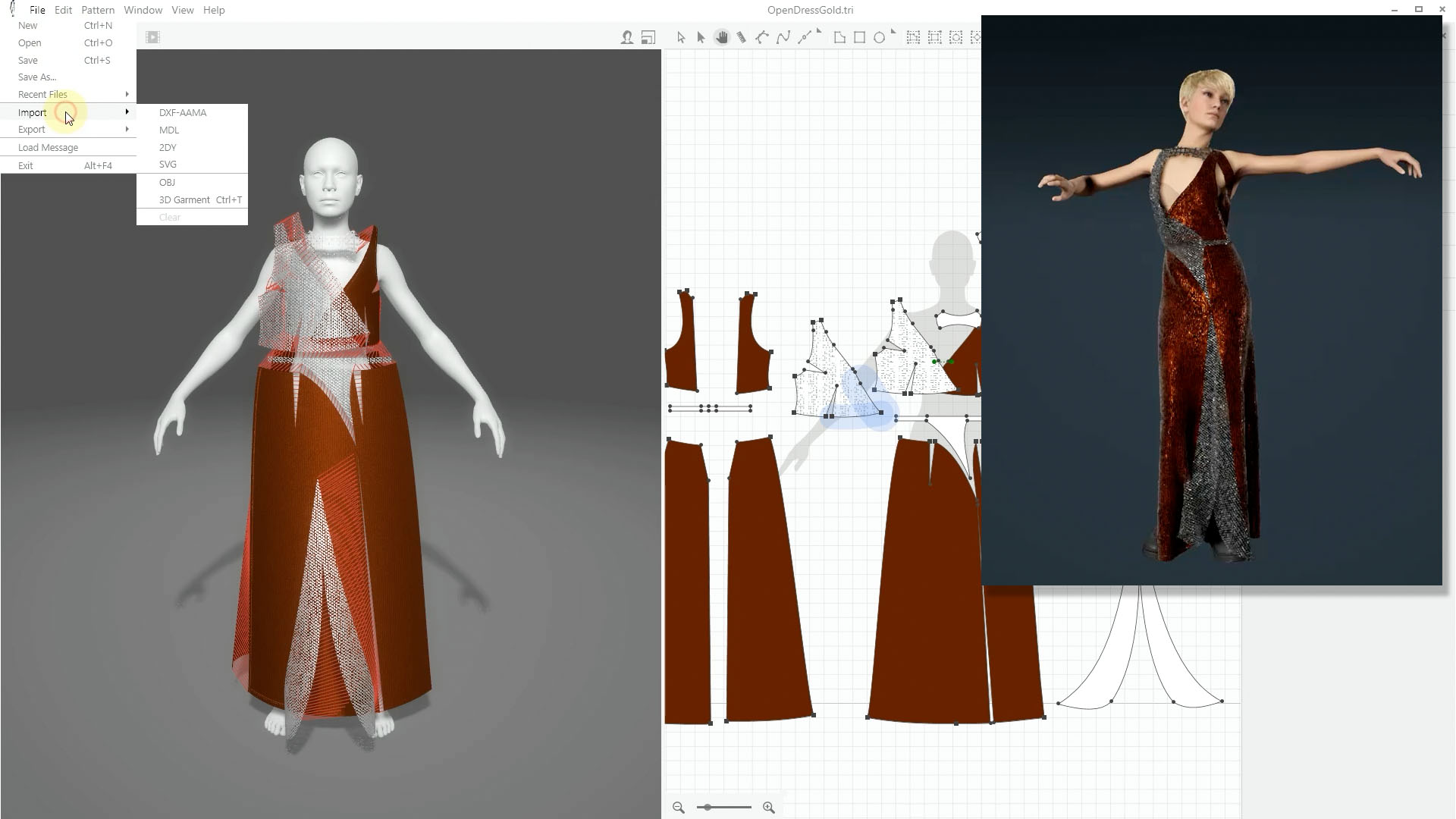

There's 3 things that need to come together: If the answer is no, and we'd have to manually do everything, than this probably is not worth the trouble. If that is possible, we could foresee doing some initial work, and then having a script that would generate renders for all different pattern options. If we do the initial work of importing a pattern and draping it on an avatar, can we then also simulate all the pattern variations in an automated way? The main question mark here is automation. for best results we should import patterns in dxg/astm format which is some sort of industry thing where if you want to look at the file specification, you have to pay $60 just be be allowed to read the PDF.Īpart from the money, it's obvious that this is a particularly poor match for an open source project like freesewing.Īn alternative that is perhaps less polished but certainly easier to digest is the garment tool plugin for Blender.clo3d is proprietary software, and not cheap.While that is promising for a first couple of hours of work, it does come with some problems: I did some initial fooling around with clo3d which yielded this result: It could also be useful for documenting all the different pattern options.

The idea is to use 3D modelling tools to test-drive patterns and their different options on virtual avatars. This should give you exactly what we need without any extra lines.This is an idea that's been explored on that chat, after initially being suggested via email by one of our users. Double-check that everything looks right, click save, and you’re all set! If that looks right, click the green check mark. We just need the top-down “outline” view, exactly as you want the laser to cut it. Confirm that only the face of the part is selected, not the whole body. Select “Export to DXF/DWG.”Ī save dialogue will pop up name your part and select “DXF” as the suffix. When you’re in “Feature” mode looking at the part, right click on the face of the part. Let’s begin!įirst, check your export setting and make sure they look like this:Įxporting all splines and splines will be ideal. But never fear! You can export the outlined face of the part exactly as it should cut by following this tutorial. DXF will flatten all the outlines for the whole part and complicate the cut. SolidWorks is a preferred modeling software for 3D designs, but we need 2D vector files to cut your parts.


 0 kommentar(er)
0 kommentar(er)
